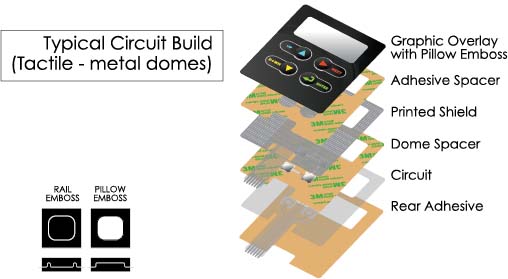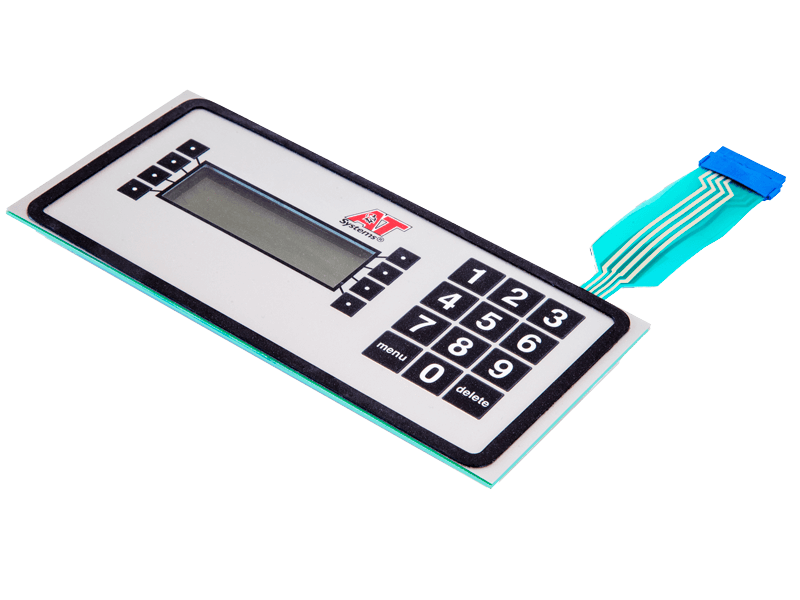The Advantages of Using Membrane Layer Switches in Customer Electronics
Membrane layer switches are increasingly identified for their considerable benefits in consumer electronic devices, especially in improving customer communication and enhancing manufacturing processes. Their ability to offer instinctive interfaces and tactile comments can greatly lower user errors, while their light-weight construction and streamlined manufacturing steps contribute to cost-effectiveness and quicker market entry. The flexibility in design enables for tailored solutions that fulfill varied customer demands. Yet, the effects of these advantages prolong past plain functionality, meaning a transformative capacity for the future of electronic tools. What additional advantages might become this technology develops?
Improved Individual Experience
In today's competitive landscape of customer electronic devices, boosted individual experience is extremely important; almost 85% of users prioritize instinctive interfaces. Membrane switches over play an important function in attaining this degree of usability. Their flat, low-profile design permits smooth assimilation into different tools, lowering mass while maintaining performance. This design visual not just enhances the visual charm however also contributes to a much more structured customer communication.
The tactile feedback offered by membrane buttons is vital for assisting customer activities, ensuring that commands are signed up properly. This comments device heightens and minimizes mistakes user satisfaction, fostering a positive partnership between the individual and the tool. The customizable nature of membrane layer changes enables manufacturers to customize user interfaces to particular individual needs, making tools a lot more obtainable and welcoming.
Furthermore, membrane switches can include backlighting and graphic overlays, better enhancing visibility and use in diverse atmospheres. This versatility ensures that tools continue to be straightforward and useful, no matter the setup. In general, the integration of membrane switches over into customer electronic devices significantly boosts individual experience, driving brand name loyalty and complete satisfaction in an increasingly affordable market.
Cost-efficient Manufacturing
Consumer electronics producers are constantly seeking ways to balance top quality with cost, and membrane buttons use a compelling option for cost-effective production. membrane switch. These parts are naturally simpler than conventional mechanical switches, which lowers both production expenses and intricacy. The lightweight design of membrane switches enables reduced delivery costs and much easier combination into portable tools, additionally improving their allure in an open market

Producers can produce membrane buttons in high volumes, making the most of economic climates of scale. This automation ability guarantees consistent quality while significantly lowering per-unit prices. In addition, the materials utilized in membrane buttons, such as polyester and polycarbonate, are typically less costly than those required for traditional switch modern technologies, adding to overall expense financial savings.
The production procedure for membrane layer switches typically needs less actions and much less labor compared to other switch types. This structured method not only minimizes labor expenses but also accelerates time-to-market, enabling companies to respond swiftly to consumer demand. The combination of lowered material expenses and reliable production procedures placements membrane layer switches over as a wise investment for suppliers aiming to supply top quality consumer electronics at competitive cost factors.
Style Versatility and Modification
While traditional mechanical switches typically impose restrictions on layout due to their mass and required installing systems, membrane layer switches offer unequaled versatility and customization alternatives for consumer electronic devices. This cutting-edge modern technology enables designers to produce sleek, inconspicuous user interfaces that can effortlessly integrate right into various product aesthetics, from mobile phones to cooking area appliances.
Membrane buttons can be created in virtually any shape or dimension, enabling producers to tailor the layout to specific ergonomic and functional demands. This flexibility not only enhances user experience however likewise permits artistic designs that line up with brand name identity. The use of published graphics on membrane switches over supplies the opportunity for complex layouts and lively colors, which can be easily modified without substantial expense implications.
Furthermore, membrane layer buttons can incorporate numerous performances right into a single layer, reducing the demand for several elements and simplifying assembly procedures. This streamlined style approach lessens space and weight, making it perfect for compact customer electronics. On the whole, the style versatility and customization abilities of membrane changes empower suppliers to introduce, inevitably resulting in more straightforward and appealing items.
Longevity and Reliability
As modern technology remains to evolve, the durability and integrity of membrane layer buttons have become vital considerations for makers in the customer electronic devices market. Membrane layer buttons are created to withstand harsh ecological problems, including temperature level changes, moisture, and dust exposure. Their durable building and construction typically involves multi-layered materials that supply a reliable barrier versus pollutants, ensuring durability and consistent efficiency.
Along with ecological resistance, membrane layer switches offer exceptional mechanical dependability. Unlike standard mechanical switches, which may wear in time, membrane layer switches use a covered layout that decreases the threat of mechanical failing. The absence of moving components not just boosts their lifespan but additionally reduces deterioration, making them perfect for high-usage applications.
Moreover, membrane layer switches can withstand a substantial variety of actuations without loss of functionality, frequently exceeding countless cycles (membrane switch). This durability converts to lower replacement prices and decreased downtime for customers and producers alike. In general, the mix of environmental strength and mechanical reliability makes membrane changes a strategic selection for consumer electronic devices, guaranteeing that gadgets remain functional and reliable throughout their intended life useful site expectancy

Streamlined Product Advancement
The resilience and reliability of membrane switches over considerably contribute to structured item development in the customer electronics sector. By incorporating these buttons early in the style procedure, find here producers can decrease the complexity and number of parts called for in their products. Membrane layer buttons are lightweight and compact, enabling for more reliable space utilization within devices, which can cause streamlined setting up procedures.

The convenience of manufacturing membrane layer buttons additionally plays an essential function in item growth. With modern printing strategies and materials, manufacturing can be scaled successfully, lowering and lessening lead times waste. This causes lower production expenses, improving total productivity.

Verdict
In final thought, membrane switches over significantly boost customer electronic devices by providing an enhanced user experience, cost-efficient production processes, and functional design alternatives. Their resilience and integrity make sure regular performance in different atmospheres, while structured item growth facilitates quicker time-to-market. These advantages collectively add to the technology and performance of customer gadgets, attending to the advancing needs of users properly. The assimilation of membrane layer switches represents a critical choice for makers seeking to maximize product layout and performance.
Membrane layer buttons are significantly acknowledged for their significant benefits in customer electronic devices, especially in boosting customer communication and streamlining production processes. Furthermore, the materials used in membrane switches, such as polyester and polycarbonate, are commonly much less costly than those required for standard button imp source modern technologies, contributing to general cost savings.
The manufacturing process for membrane switches over commonly requires less steps and less labor contrasted to various other button types. Unlike typical mechanical switches, which might use out over time, membrane layer switches make use of a sealed style that minimizes the risk of mechanical failure.In final thought, membrane layer switches over considerably enhance consumer electronic devices by giving an enhanced user experience, cost-effective manufacturing procedures, and functional design choices.